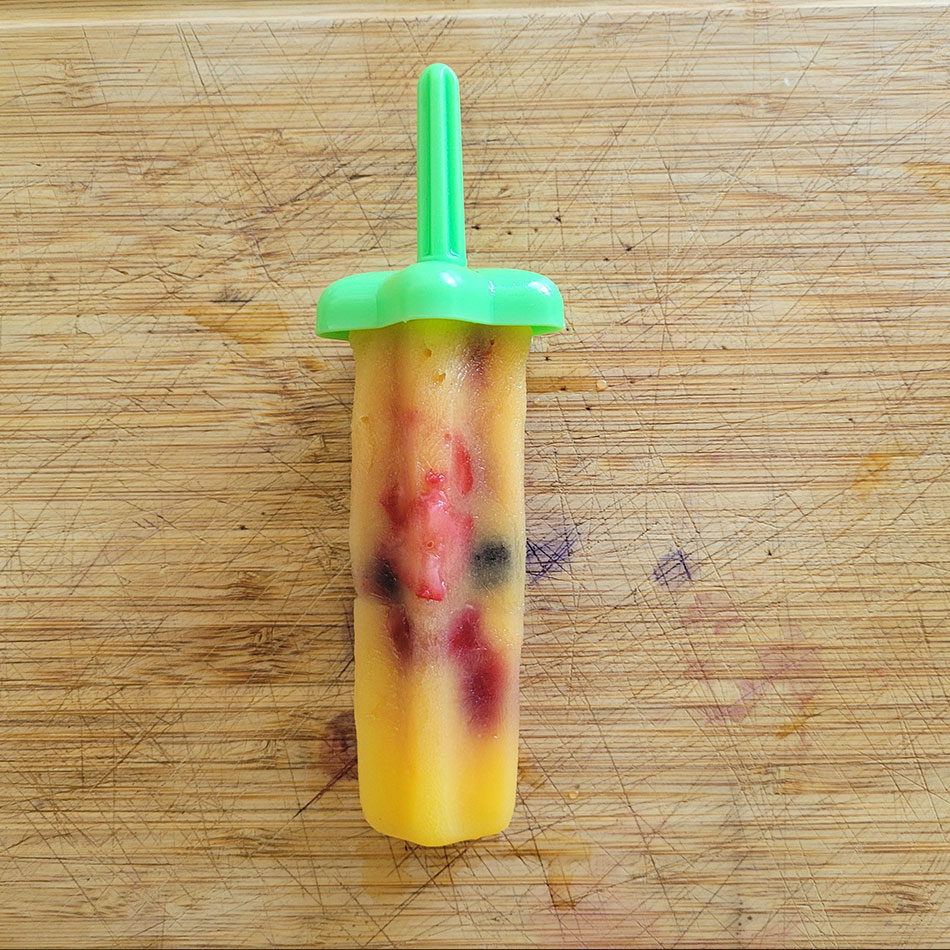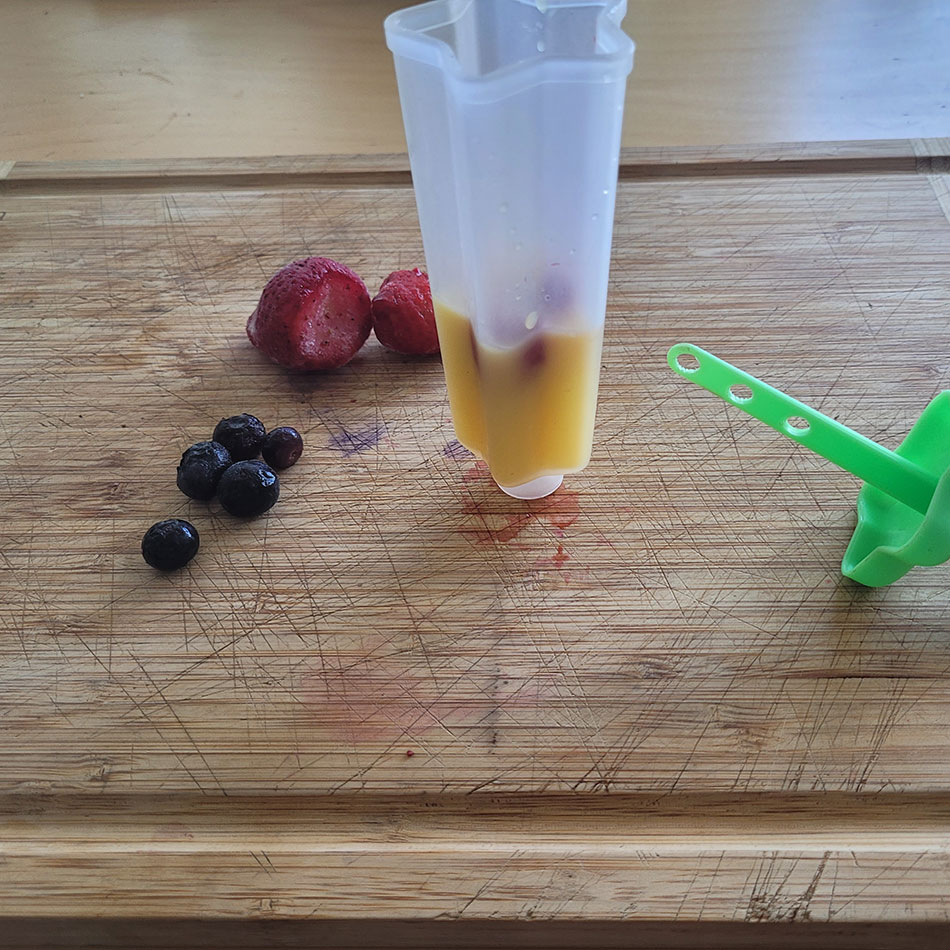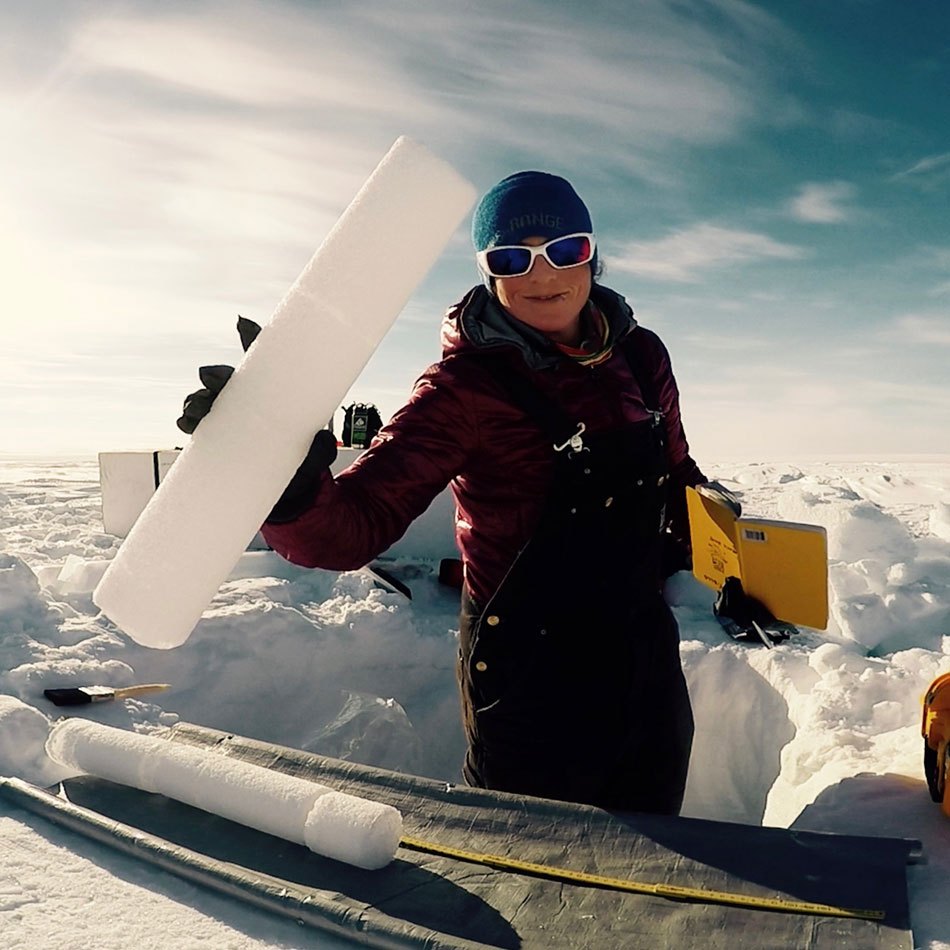Ice Core Freezer Pops
Enjoy layers of learning with a tasty treat!
- All
- Things to Make
- Fun With Food
What you’ll need:
Equipment:
- A freezer
- Ice pop moulds, small plastic containers (recycled yogurt or applesauce cups work well) or an ice cube tray
- Popsicle sticks
Ingredients:
Juice layers
- Your choice of juice or flavoured water*
Add-ins (any of the following)
- Fresh fruit (chopped into small pieces)
- Small candies
- Candy sprinkles
- Chocolate chips
*To add more dimension to your ice pops, try using different types of juice for each layer or adding food colouring.

Activity setup:
- Place your ice pop moulds, small containers or ice cube tray on a table or other work surface.
- Pour juice into each receptacle until it is 1/3 full.
- Place the container(s) in the freezer for at least a few hours, or until the juice is set.
- Create the next layer by pouring juice on the first layer until the cup is 2/3 full. To create a dramatic effect, use a different colour of juice for the second layer.
- Sprinkle some chopped up fresh fruit, candy or other add-in onto the second layer of juice.
- Add a popsicle stick to each ice pop, then place the container(s) back in the freezer until set.
- Pour juice into each receptacle until the container is just full. If possible, use a different colour of juice for the third layer.
- Place in the freezer until frozen.
- Gently release your ice pops from their moulds by running warm water on the outside of the container (or, if using an ice cube tray, by twisting the tray).
- Examine the finished product. How do your ice pops look? How do they taste?
- Enjoy your ice pops!
Try this:
You can create an infinite variety of ice pops! Try using different types of juice, flavoured Greek yogurt, pureed fruit mixed with a little sugar and more. You can make more layers by using smaller amounts of each ingredient.

How does it work?
Scientists use ice cores to discover what has happened to the Earth over thousands of years.
In the areas around the North and South poles, snow falls and never melts. Just like your ice pops, the snow builds up to create layered ice cores.
By studying the different ice core layers, scientists called paleoclimatologists can learn about the climate of previous years, from air temperature and the amount of gases that were in the air to the levels of dust, ash, pollen and sea salt. These scientists use a special drill to create ice core cylinders below the surface. Then, they bring these ice cores up to the surface to study them.
Throughout the world, there are several libraries of ice cores that have been excavated from different locations and depths. These ice cores are stored in special containers and deep freezers so that scientists can analyze them to make predictions about what might happen in Earth’s climate future.
Did you know?
- Scientists usually drill ice cores and bring them up to the surface in 4-metre sections.
- The longest ice core ever drilled was taken from Antarctica. It was 3623 metres deep!
- The oldest ice core allows scientists to look 800,000 years back in time. It gives a glimpse into Earth’s climate history over that period.

What can you do?
Create an ice pop that tells a story. Pretend that the yellow sprinkles represent ash from a volcanic eruption. Imagine that the yogurt layer is evidence from a time when there was low oxygen in the atmosphere. Make some ice pops and share in the fun of making discoveries with your friends and family. What stories can your ice pops tell?
Photo by Alison Criscitiello. Agassiz Ice Cap, Ellesmere Island, Canadian High Arctic